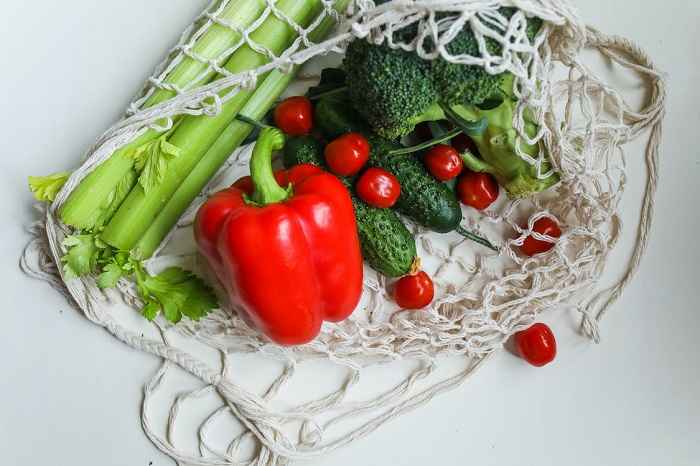Creating the Perfect Vegetable Garden
3 Smart and Cost-Effective Ways to Get Started

The price of eggs rose 60% in 2022, while cereal and bakery product prices rose 16.1%, highlighting the fact that shoppers are routinely spending more on staple grocery items. For those looking to cut down the cost of their grocery bill in 2023, starting a vegetable garden at home is a great way to do so, and it doesn’t have to cost a fortune to start or maintain, either. From how you can effectively minimize waste to getting the most out of your scraps, here’s just a few key tips for starting a vegetable garden while on a budget.
Getting the most out of kitchen scraps
When looking to save money when starting a vegetable garden, growing the seeds that come from vegetable scraps that are already in your kitchen can be a great way to do so. According to one post from the Farmers Almanac site, “kitchen scrap gardening” can be applied to a variety of veggies — including green onions, celery, romaine lettuce, garlic, and potatoes (to name just a few). For example, growing a new onion out of the end with the little roots growing out of it can be as simple as placing it root-end down in potting soil in a sunny window. According to the site, with regular watering the onion should grow back tall enough to snip off and eat in less than two weeks. With garlic, planting one clove root side down in the fall will bring a full bulb the next spring or summer, while re-growing herbs (like basil and cilantro) can be achieved by simply cutting a stem about four inches long before placing it into a glass of water. From there, the post recommends placing the glass in a bright area (out of direct sunlight), which will allow you to see roots forming in just a few days — once this happens, it’s noted that you’ll be able to transplant them into soil.
Maximizing savings while creating a beautiful space
Ensuring that your outdoor garden area is aesthetically pleasing can also be done in various ways that don’t involve spending a lot of money. One Better Homes & Gardens post highlights various ways in which you can create a visually appealing garden, from adding in colorful fruits and herbs to installing a simple arbor that features climbing greenery. Adding colorful flowers also offers a cheap solution that will bring a pop of color to your garden as well — in fact, the post highlights the fact that flowers in the daisy family work to attract beneficial insects “that will attack and kill pests like tomato hornworms or aphids.”
Ensuring that your garden area is designed to minimize waste where possible can also help in creating a cost-effective space, and is often something done by commercial business properties in order to reduce the costs associated with maintenance. For example, reducing maintenance in an outdoor space can be achieved by including grasses and natural flowers that don’t grow too long. If you have flower beds within your gardening area that are separate from the vegetables, hardscaping can ensure that the beds are only so deep, which will allow a certain amount of growth. Including sustainable hardscaping within your garden’s design can also be beneficial, especially if you have a large garden area. For instance, stone or brick pathways that are long lasting, visually appealing, and low maintenance can make a wonderful addition to a garden.
Saving money through composting
When it comes to garden maintenance and saving money, composting can make a considerable difference in both reducing waste and saving money. While a composting bin can be the ideal way to get rid of vegetable scraps or veggies that have expired, the compost itself can save you money in the long run as it can go back into benefiting your garden. As a result, you’ll not only improve the quality and health of your garden, you’ll reduce the use of pesticides and fertilizer, too. “It takes more time, but it saves a lot of money,” says Brooke Edmunds, a horticulturist with Oregon State University Extension Service. “Use your kitchen scraps and garden waste and start building your own,” Edmunds adds.
When looking to compost at home, the ingredients should include a proper balance of water, air, carbon-rich materials, and nitrogen-rich materials, according to The Environmental Protection Agency (EPA). The EPA notes that in addition to food and veggie scraps, there are an abundance of additional things that you can compost — including coffee grounds, paper tea bags (no staples), eggshells, and most grass clippings and yard trim, which are considered to be nitrogen-rich material or “greens.” Carbon-rich materials, or “browns,” can be found via dry leaves, plant stalks/twigs, shredded paper, and untreated wood chips. That said, the EPA also notes that there are a variety of things that shouldn’t be composted — including meat/fish/bones, cheese and dairy products, pet waste and cat litter, produce stickers, diseased and pest-infested plants to name just a few.
Starting and maintaining a vegetable garden can sound like an expensive project, though it certainly doesn’t have to be. By considering the advantages of composting, recycling scraps that you may already have, and opting for long lasting, sustainable additions, you can work towards a plentiful and cost-effective garden in no time at all.
Source: Karoline Gore

